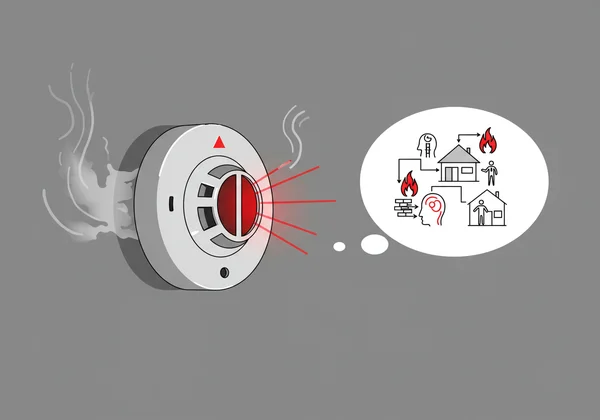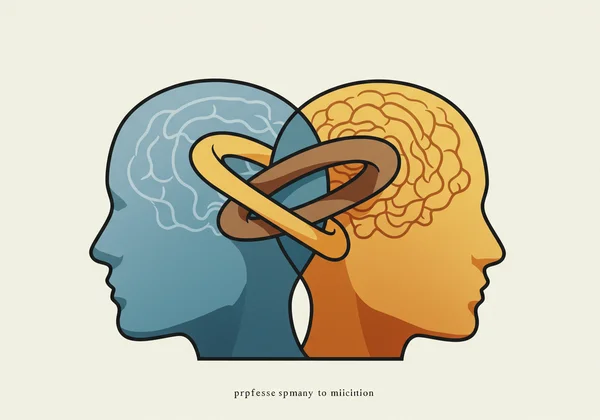The Limitations of PHQ9: What It Can and Cannot Tell You
Taking charge of your emotional well-being is a vital step toward a healthier life. The Patient Health Questionnaire-9, or PHQ9, is one of the most recognized tools for getting a quick snapshot of your mental health. But after you get a score, you might wonder: Is the PHQ9 a reliable assessment tool? The answer is yes, but its true power lies in understanding its purpose and its boundaries. A score, on its own, is just a number. It truly becomes meaningful when you understand its context and what it means for your unique situation.
This guide will walk you through the limitations of the PHQ9 to help you use it as intended: as a powerful, informative first step. By understanding what it can and cannot tell you, you can more effectively use the information to start a meaningful conversation about your mental health. Ready to begin your journey with clarity? You can start your emotional checkup on our free, confidential platform at any time.
PHQ9: A Screening Tool, Not a Diagnostic Instrument
The most critical distinction to grasp is the difference between screening vs diagnosis. Think of the PHQ9 as the smoke detector in your house. It's an incredibly effective tool for alerting you to potential danger—smoke—but it can't tell you if there's a small kitchen fire or a major electrical issue. It simply says, "Hey, it's time to investigate this further." The PHQ9 functions in precisely the same way for your emotional health.

It flags potential symptoms of depression, providing a score that indicates the severity of those symptoms. This is an invaluable starting point, giving you a concrete piece of data to understand how you've been feeling. It empowers you to move from a vague sense of "not feeling right" to a clearer picture of your experience, making it easier to take the next step.
What Does "Screening" Really Mean in Mental Health?
So, what is phq9 in this context? In mental health, a screening is a brief, preliminary check to see if a more thorough evaluation is needed. It’s designed to be quick, accessible, and easily administered. The purpose isn't to provide a definitive answer but to identify individuals who might benefit from a deeper conversation with a healthcare professional.
The PHQ9 excels at this. It systematically asks about the nine most common symptoms of depression over the past two weeks. This structured approach ensures that key areas are not overlooked, giving you a comprehensive overview of your recent emotional state. A free online test can provide this initial insight quickly and privately.
Why a PHQ9 Score Isn't a Diagnosis
The answer to the question can phq9 be used to diagnose is a firm and resounding no. A formal diagnosis is a complex clinical process that a simple questionnaire cannot replicate. A qualified professional, such as a doctor or therapist, will conduct a comprehensive assessment that includes:
-
Personal Context: Understanding your life circumstances, stressors, and recent events.
-
Full Medical History: Ruling out other medical conditions or medication side effects that can mimic depressive symptoms.
-
Clinical Interview: A detailed conversation about the duration, intensity, and impact of your symptoms.
-
Observing Nuance: A professional can interpret the subtleties of your experience that a questionnaire can't capture.

Your PHQ9 score is an essential piece of the puzzle, but it is not the whole picture. It’s a starting point for discussion, not a final conclusion.
Exploring the Specific PHQ9 Limitations
Acknowledging the PHQ9 limitations doesn't diminish its value; it enhances it. When you know the boundaries of a tool, you can use it more effectively and responsibly. The PHQ9 is a robust instrument, but like any tool, it has specific situations where its results need careful interpretation. Being aware of these helps ensure you see your results with the right perspective.
While taking the questionnaire is the essential first step, understanding the factors that might influence your score is equally crucial. This insight empowers you to transform a simple number into meaningful data, preparing you for a more productive conversation with a healthcare provider, should you choose to take that step.
Situations Where PHQ9 May Be Less Accurate
While generally reliable, there are scenarios that can affect PHQ9 accuracy. For instance, someone experiencing profound grief after a loss may score highly on the PHQ9. Many symptoms of grief, like sadness, sleep problems, and loss of interest, overlap with depression. However, grief is a natural response, not a disorder. A professional can help distinguish between complicated grief and major depression.
Similarly, chronic physical illness, pain, or certain medications can cause symptoms like fatigue and changes in appetite, which can inflate a PHQ9 score. The questionnaire doesn't differentiate the source of the symptom, which is why professional interpretation is key.
Factors Influencing PHQ9 Results Beyond Depression
It's common for mental health challenges to travel together. Co-occurring conditions, especially anxiety, can significantly impact PHQ9 results. Many people experience symptoms of both depression and anxiety simultaneously. The fatigue, irritability, and concentration difficulties measured by the PHQ9 are also classic signs of anxiety disorders.
Therefore, a high score might indicate depression, an anxiety disorder, or a combination of both. This is why tools like the PHQ9 are often used alongside other screeners, such as the GAD-7 for anxiety. Understanding this overlap helps you see your PHQ9 results as a signal to explore your overall emotional well-being, not just one specific aspect of it.

Is PHQ9 Reliable? Weighing Its Strengths and Context
So, is PHQ9 reliable? Absolutely. Within its designed purpose as a screening tool, the PHQ9 is scientifically validated and trusted by clinicians worldwide. Its reliability comes from its consistency in measuring depressive symptoms and its strong correlation with clinical diagnoses when used in a professional setting. The key is using it correctly and understanding its context.
The strength of the PHQ9 lies in its simplicity and focus. It provides a standardized, objective measure of symptom severity that can be used to open a dialogue or track changes over time. When you take a reliable screening, you are using a tool that has helped millions of people take the first step toward understanding their mental health.
The PHQ9's Proven Utility and Validity
The clinical utility of the PHQ9 is well-established. It was developed and validated in primary care settings, proving to be a highly effective tool for busy doctors to quickly screen for depression. Its brevity and ease of scoring make it practical for initial assessments and for monitoring a patient's response to treatment over time.
Its validity means that it genuinely measures what it claims to measure—the core symptoms of depression. Researchers have repeatedly shown that PHQ9 scores align closely with more intensive diagnostic interviews. This gives you confidence that your score is a meaningful indicator, providing a solid foundation for your emotional health journey.
When to Seek Professional Guidance Beyond Your PHQ9 Score
Knowing when to seek professional guidance is the most empowering part of this process. Your PHQ9 score is your personal guide. You should consider speaking with a doctor or mental health professional if:
-
Your score falls in the moderate to severe range (10 or above).
-
Your score, regardless of the number, is causing you distress.
-
Your symptoms are interfering with your work, relationships, or daily life.
-
You score anything above a zero on the ninth question, which addresses thoughts of self-harm. This is a critical indicator to seek immediate help.

Your score is your data. Use it to advocate for yourself and start a conversation that could change your life.
Your Informed Journey: Moving Forward with Clarity
The PHQ9 is more than just a questionnaire; it’s a doorway to self-awareness. By understanding its limitations, you transform it from a simple test into a sophisticated tool for your personal emotional checkup. It’s not a diagnosis, but a screener. It’s not the final word, but the first sentence in a new chapter of your mental health journey. It provides a clear, confidential starting point, empowering you with the knowledge to take meaningful action.
Now that you understand its role, you can use the PHQ9 with confidence and clarity. Ready to take that informed first step? Complete your PHQ9 assessment on our secure platform today. It’s free, confidential, and takes only a few minutes. We invite you to share your thoughts on using screening tools for mental health in the comments below.
Frequently Asked Questions About PHQ9 Limitations and Reliability
Can the PHQ9 be used to diagnose depression?
No, the PHQ9 is a screening tool, not a diagnostic instrument. It can identify symptoms of depression and their severity, but a formal diagnosis must be made by a qualified healthcare professional after a comprehensive evaluation.
Is the PHQ9 a reliable assessment tool?
Yes, the PHQ9 is a highly reliable and clinically validated tool for its intended purpose: screening for depression and monitoring symptom severity over time. Its reliability depends on understanding it is a starting point for a conversation, not a final answer.
What are the weaknesses of the PHQ9?
The main weaknesses are its inability to determine the cause of symptoms (e.g., grief vs. depression), its potential to be influenced by other medical or psychological conditions like anxiety, and its lack of personal context. These limitations are why its results should be discussed with a professional.
Who can administer a PHQ9 questionnaire?
The PHQ9 is designed for self-administration, making it an excellent tool for a personal emotional checkup. Anyone can take the free test online. However, the interpretation of the results and any subsequent steps should ideally be done in consultation with a healthcare provider.
How often should a PHQ9 be done?
This depends on your situation. It can be used as an initial baseline screening if you are concerned about your mood. If you are undergoing treatment, a clinician may recommend taking it at regular intervals (e.g., every few weeks or months) to track your progress.